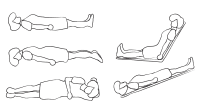Meeting The Joint Commission standard.
Takeaways:
- The Joint Commission Medication Management Standard states that hospitals are responsible for reducing medication errors.
- Preparing for Joint Commission certification or recertification includes reviewing current practices, identifying areas for improvement, and implementing changes that reduce the potential for errors.
- Successful change implementation requires staff participation and engagement.
To receive Joint Commission accreditation, hospitals must pass over 250 standards, including those for medication titration. The Medication Management Standard (MM.04.01.01 EP 1) states that the hospital is responsible for reducing the potential for medication errors. This attentiveness is especially important for medications that are titrated progressively according to the patient’s response. However, medication titration frequently receives a high-risk finding from The Joint Commission.
Overton Brooks Veteran Affairs Medical Center (VAMC) recently received a Best Practices designation from The Joint Commission for medication titration. To achieve this goal, an interprofessional team evaluated medication titration in the critical care unit (CCU) and implemented a plan to achieve the required elements in the standard. (See Titration roles and requirements.)
Titration roles and requirements
Following The Joint Commission Standard minimizes the risk of adverse events and improves patient safety when titrating I.V. medications. Three healthcare workers play critical roles in medication titration: the provider, the pharmacist, and the critical care nurse. The Joint Commission Medication Management Standard requires that each medication order include the following information:
- administration route
- dose increase or decrease
- maximum dose and rate
- medication goal
- medication name
- starting dose
- time frequency between changes in the dose and rate
- titration dose
The medication goal may be clinical assessment or an indicator such as:
- heart rate
- analgesia
- blood pressure
- Confusion Assessment Method for the ICU
- Face, Legs, Activity, Cry, Consolability scale
- Glasgow Coma Scale
- mean arterial pressure
- pain score (0 to 10 scale)
- respiration rate
- Richmond Agitation Sedation Scale score
- sedation
- Train of Four.
When administering I.V. opioids, monitor vital signs and facial and body expression for the desired response, and when titrating down, monitor for signs and symptoms of withdrawal. Hospital policies should follow the state board of nursing scope of practice. Registered nurses may not delegate medication administration to a licensed practical nurse.
Joint Commission readiness
Knowing Overton Brooks VAMC would soon be surveyed by The Joint Commission, the quality safety and value (QSV) department focused on the standards. When performing CCU chart reviews, QSV identified provider medication orders and nurse documentation that didn’t meet the standards, including those that lacked consistency in how titratable medication orders were written. Vital information—such as starting dose and titration frequency or dose—was missing from orders, and some orders showed inconsistent Richmond Agitation Sedation Scale (RASS) scores. Here are two examples of orders written incorrectly.
_____________________________
Propofol for sedation order:
Goal RASS score 0 to –1.
Start infusion at 5 mcg/kg/minute.
Adjust dose by 5 mcg/kg/minute every 15 minutes until RASS 0 to –2.
Maximum dose 50 mcg/kg/minute.
The RASS scores aren’t the same, leaving the nurse uncertain about which score to use.
Norepinephrine for vasopressor order:
Goal mean arterial pressure (MAP) >65 mmHg.
Start infusion at 0.05 mcg/kg/minute.
Max dose 2 mcg/kg/ minute.
_____________________________
The adjustment dose and frequency are missing from the order. The nurse must decide how much and at what frequency the medication should be changed, which is out of scope of practice. Each nurse caring for the patient may interpret the orders differently, increasing the risk for adverse events.
In addition, the QSV found that critical care nurses documented RASS scores inconsistently. One nurse might document every hour, while another might document every 4 to 5 hours. In addition, the nurses inconsistently charted their clinical assessment reasons for making titration rate changes. Responses to changes also were documented inconsistently. Any one of these would have been a major finding for The Joint Commission.
Addressing challenges
Several challenges resulted in inconsistent medication titration orders and documentation. Overton Brooks VAMC serves as a teaching facility with residents and interns rotating through the CCU every 2 weeks, some for the first time while others return after 3 to 6 months. Many experienced nurses had recently retired or transferred out of the unit, which created an influx of new staff, including agency workers, recent graduates, and nurses transferring from other departments. At the same time, the COVID-19 pandemic was at its peak and many nurses were out due to illness, which caused staffing challenges. In addition, nursing orientation had been cut short. Because nurses continued to document on paper, the QSV faced difficulty locating charts. Obtaining COVID-19 unit charts for review was especially challenging because the reviewer couldn’t enter the unit and had to depend on others to locate them.
The interprofessional team (including representatives from QSV, nursing leadership, and the education department, as well as the CCU nurse manager and the pharmacist) spoke with the CCU providers and nursing staff to identify barriers to meeting The Joint Commission standards and determined that healthcare providers required additional education on ordering I.V. titration medications when they started their rotation through the CCU. To aid in that effort, the interprofessional team created a flyer to be posted in the CCU team room. (See Complete titration order.)
Complete titration order
The Overton Brooks Veteran Affairs Medical Center interprofessional team for medication titration created a flyer showing the elements of a complete medication titration order.
Elements of a Complete Titration Medication Order
Titration medication orders should include all the following information:
Name of medication I.V. administration ________________________
Goal: RASS score ________ (e.g., 0 to –2 or)
MAP _____________ (e.g., >65 mm/Hg)
Start infusion at __________ (e.g., mcg/hour or mcg/kg/min)
Adjust by ________________ (e.g., mcg/hour or mcg/kg/min) every
_______minutes until:
RASS _____ (e.g., 0 to –2 or)
MAP ______ (e.g., >65 mm/Hg
Max dose _________________
Include a daily review of titratable medications in your progress note, including the current rate, effects, and plan.
Interprofessional team members continued to review the I.V. titration medication orders daily. When a reviewer spotted an incorrect order, they walked the provider through the process of correcting the order, explaining the problem and why it placed the patient at risk.
The team developed a list of commonly ordered titratable medications, and staff from the computerized paper record system (CPRS) developed an order set for these medications that included all the required elements. Healthcare providers now complete the order by simply filling in the blanks. Occasionally, providers who want something that’s not in the order set (for example, mcg/kg/minute rather than mcg/
minute for norepinephrine) have circumvented the process, which has led to missing required elements. (See Common titrated medications.)
Common titrated medications
The following medications are most commonly titrated in Overton Brooks Veteran Affairs Medical Center critical care unit.
Analgesics
- Fentanyl
- Morphine
Antiarrhythmics
- Diltiazem
- Esmolol
Antihypertensives
- Nicardipine
- Nitroglycerin
Neuromuscular blockers
- Cisatracurium
Sedatives
- Dexmedetomidine
- Ketamine
- Midazolam
- Propofol
Vasoactive medications
- Dobutamine
- Dopamine
- Norepinephrine
- Phenylephrine
- Vasopressin
The pharmacist also was educated about the elements required in the orders, empowering them to stop the line if information isn’t included. The pharmacist must contact the healthcare provider and request the additional information. When a medication order is edited, the pharmacist can’t see the changes because of the way the system works. For the pharmacist to see a change, a new order must be entered.
Having an interprofessional team work to resolve medication order challenges allowed each representative to own their part of the solution. For example, pharmacy currently works with CPRS to address circumvention of the approved computerized orders.
Nursing concerns
The interprofessional team identified four concerns related to nursing care and medication titration.
- Flow sheet. The flow sheet contains only four lines for I.V. fluids, so when a patient had multiple drips, nurses didn’t have enough room for all of the required information. Nurses also thought they were double-charting information.
- Documentation elements. Many nurses found the required documentation elements (starting dose, clinical assessment or indicator that reflects the medication order, response to the medication with each dose or rate change, and change effectiveness) confusing.
- Order confusion. Providers might write two RASS scores in the order, and titrating parameters might be too broad. When two or more medications used for sedation or for blood pressure were ordered, no instructions were provided about which should be titrated first. When nurses asked for clarification, they didn’t always document the verbal order, leaving the nurse on the next shift unaware of the clarification, especially if the healthcare provider didn’t document it in the orders or their notes.
- Communication breakdowns. Nurses were unknowingly given wrong information. For example, they were told that healthcare providers couldn’t adjust RASS scores, but in fact, those were a recommendation and not a fixed order. For example, consider an ordered RASS score of 0 to –1. The patient arouses easily to any noise, becomes restless, and tries to pull at lines and the endotracheal tube. The nurse calls for an additional medication order to help calm the patient rather than asking the healthcare provider to change the order and increase the RASS score to 0 to –2. Nursing staff and healthcare providers were instructed that all parameters in the quick order set must be adjusted for each patient when entering medication orders.
SOP and block charting
To address nursing concerns, Overton Brooks VMAC nursing leadership developed a standard operating procedure (SOP) for titratable medications and shared it with nurses and healthcare providers. In addition, the CCU nurse manager created a PowerPoint presentation demonstrating the medication order, documentation expectations and examples, and block charting (charting that covers documentation over a time period, typically in 4-hour increments).
Many nurses expressed resistance to block charting, but the nurse manager found opportunities where its use was appropriate and worked one-on-one with the nurses to demonstrate its efficiency. The team now frequently sees it when reviewing charts. (See Block charting.)
Block charting
In an emergent situation where frequent medication titration is necessary within a short time frame, The Joint Commission approves block charting, which shouldn’t exceed 4-hour increments. Within the medication administration start and end times, the block charting entry must include the medication name, the starting and ending rates and doses, the maximum rate and dose administered, and the assessment for administrating the titration medication.
Block charting example:
1615–1830 Patient blood pressure 78/45, MAP 56 mm/Hg.
Dr. Smith ordered dopamine 400mg/250mL D5W to be started at 5 mcg/kg/min (12.2 mL/hr), titrated 5 mcg/kg/min every 2 min until MAP >65 mm/Hg.
Patient weighs 65 kg; max dose at 20 mcg/kg/min.
Dopamine is now infusing at 15 mcg/kg/min (36.6 mL/hr) per pump.
BP 95/53 mm/Hg
MAP 67 mm/Hg
Dr. Smith inserted TLC to RIJ, chest x-ray for placement.
Received confirmation of placement all I.V. fluids moved to TLC.
BP = blood pressure, D5W = dextrose 5% in water, MAP = mean arterial pressure, RIJ = right internal jugular, TLC = triple lumen catheter
Chart reviews and outcomes
Interprofessional team members conducted daily chart reviews of the previous day’s documentation, provided one-on-one feedback, and conducted open discussions about missing information and its importance to patient safety. The team encouraged staff to ask questions. For example, during one assessment when the reviewer pointed out a missing RASS score, the nurse said, “We chart the score on the front.” The reviewer pulled the chart to show that only one RASS score for the night shift was charted and discussed RASS charting frequency.
Many staff asked that their chart be reviewed, and they expressed excitement when they were told their chart looked good. The nurse manager compiled examples of good and bad charting, with explanations. The nurse manager and a reviewer also evaluated charts during night shift and conducted discussions with the night staff.
Healthcare providers now use the quick order sets, and as a patient’s condition changes, the orders are individualized. For example, goals for heart rate, MAP, or RASS score are adjusted as appropriate. Few orders are incomplete.
Nursing made the biggest impact in preparing for The Joint Commission survey. Documentation improved, including dosages and rates and clinical assessments before and after each rate change to show effectiveness. Nurses embraced block charting for emergent situations and routinely document verbal orders.
Looking to the future
The CCU staff have moved to computer charting and use a program with minimal free text charting required, and super users have been trained. The program automatically uploads vital signs, ventilator settings, I.V. fluid rates, and medication dosages from I.V. pumps. The nurses still document the clinical assessment for medication titration and the effects.
The interprofessional team continues to monitor medication titration via random chart reviews, and the nursing manager assigns nurses to perform chart reviews as well, ensuring that staff document all the required elements in the new system. New hires receive orientation and instruction on the SOP for titratable medications in the CCU, and the nursing manager reinforces the practice of documenting verbal orders.
As The Joint Commission standards and policies are reviewed and updated as needed, the interprofessional team and the CCU nursing staff continue to look for ways to improve patient safety and reduce adverse events.
Shirley Maum is the utilization management care coordinator at Overton Brooks VA Medical Center in Shreveport, Louisiana.
References
Gorski LA, Hadaway L, Hagle ME, et al. Infusion therapy standards of practice, 8th Edition. J Infus Nurs. 2021;44(1S suppl 1):S1-224. doi:10.1097/NAN.0000000000000396
The Joint Commission. Medication administration: Titration orders. October 19, 2021.
The Joint Commission. Medication administration: Titration orders: Documentation during rapid titration. October 19, 2021.
Louisiana State Board of Nursing. Declaratory statement on the role and scope of practice of registered nurses delegating intravenous therapy interventions. December 6, 2000.


















